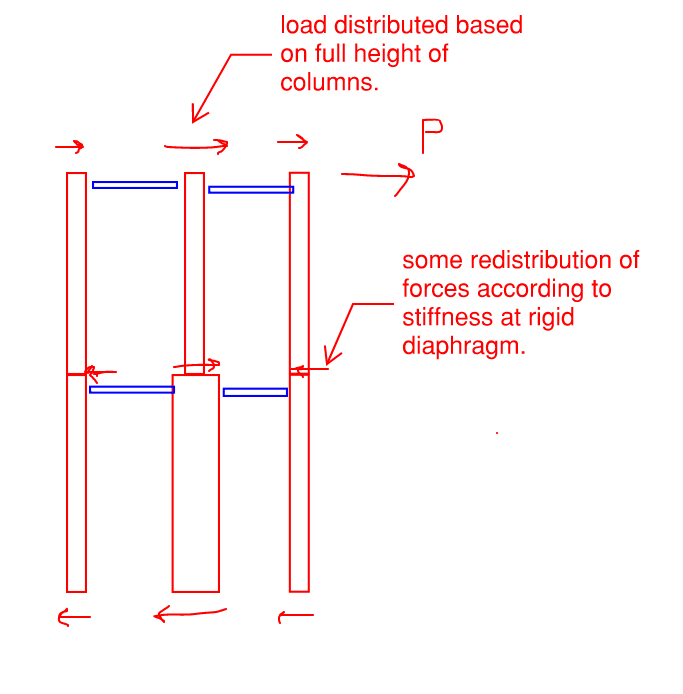ChiEngr
Structural
- Oct 19, 2021
- 77
Hello,
Apologies if this question may be simple, but I am trying to wrap my head around the following concept.
I am working on a fairly complicated project. It is a 100 year old, single story building. The floor to roof height is just shy of 30 ft. The owner wants to add an adjacent 2 story building to the east of the existing building to be used for office space. The owner thus wants to convert the single story existing building into a two-story space. I am designing a new second floor within the existing building footprint, but keeping this second floor structure isolated from the perimeter brick masonry walls (multi-wythe). In order to integrate the new east building addition into the existing building footprint, the owner wants to demolish the existing east wall to create an open space and seamless integration between the two buildings.
The existing roof diaphragm is a solid precast concrete slab. Thus, the slab is a rigid diaphragm. By removing the existing east shear wall, the center of rigidity moves far west to the existing west brick masonry shear wall. In order to prevent the remaining walls from seeing an increase in load due to the east wall removal, we plan to introduce new concrete shear walls between the ground floor and new second floor and between the new second floor and the roof. The new shear walls will be worked into the architectural concept/programming.
The new shear walls are not of equal length however; the bottom run of wall is 15 ft, and the top run of wall above the second floor is 10 ft. After modeling this wall configuration, I found that the new shear wall is picking up as much load as the original east wall to be demolished. This is what I was hoping to achieve. I next tried to see if the shear wall could be cut down to 10 ft in length over its entire height. The amount of load going to this wall decreased significantly. I am trying to understand why this is the case. I am probably overthinking this, but why does the bottom run of wall influence the stiffness of the top run of wall given that the new second floor level is also a rigid diaphragm, tied to other lateral force resisting elements.
Thanks for your help; sorry if the above was wordy or unclear!
Apologies if this question may be simple, but I am trying to wrap my head around the following concept.
I am working on a fairly complicated project. It is a 100 year old, single story building. The floor to roof height is just shy of 30 ft. The owner wants to add an adjacent 2 story building to the east of the existing building to be used for office space. The owner thus wants to convert the single story existing building into a two-story space. I am designing a new second floor within the existing building footprint, but keeping this second floor structure isolated from the perimeter brick masonry walls (multi-wythe). In order to integrate the new east building addition into the existing building footprint, the owner wants to demolish the existing east wall to create an open space and seamless integration between the two buildings.
The existing roof diaphragm is a solid precast concrete slab. Thus, the slab is a rigid diaphragm. By removing the existing east shear wall, the center of rigidity moves far west to the existing west brick masonry shear wall. In order to prevent the remaining walls from seeing an increase in load due to the east wall removal, we plan to introduce new concrete shear walls between the ground floor and new second floor and between the new second floor and the roof. The new shear walls will be worked into the architectural concept/programming.
The new shear walls are not of equal length however; the bottom run of wall is 15 ft, and the top run of wall above the second floor is 10 ft. After modeling this wall configuration, I found that the new shear wall is picking up as much load as the original east wall to be demolished. This is what I was hoping to achieve. I next tried to see if the shear wall could be cut down to 10 ft in length over its entire height. The amount of load going to this wall decreased significantly. I am trying to understand why this is the case. I am probably overthinking this, but why does the bottom run of wall influence the stiffness of the top run of wall given that the new second floor level is also a rigid diaphragm, tied to other lateral force resisting elements.
Thanks for your help; sorry if the above was wordy or unclear!

